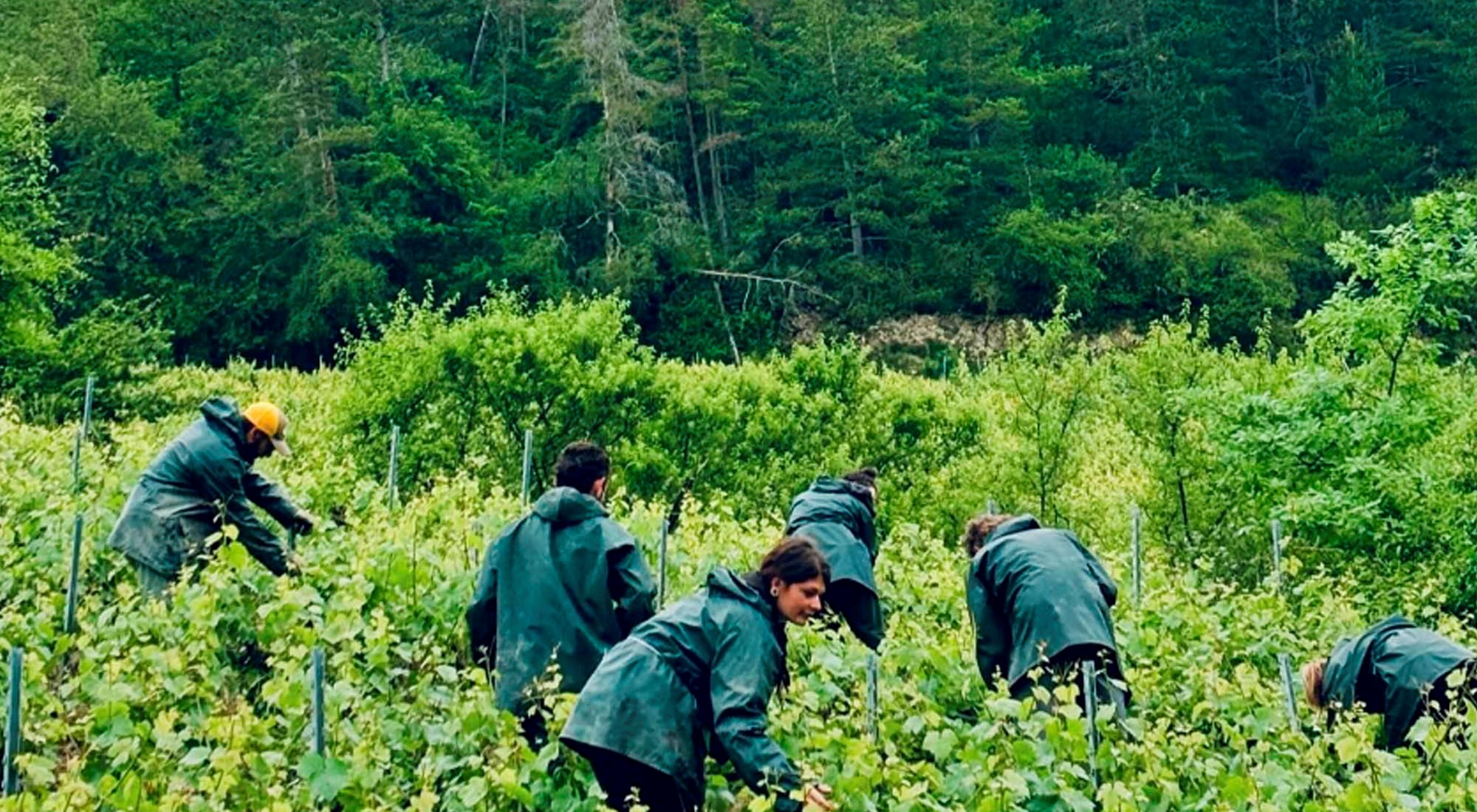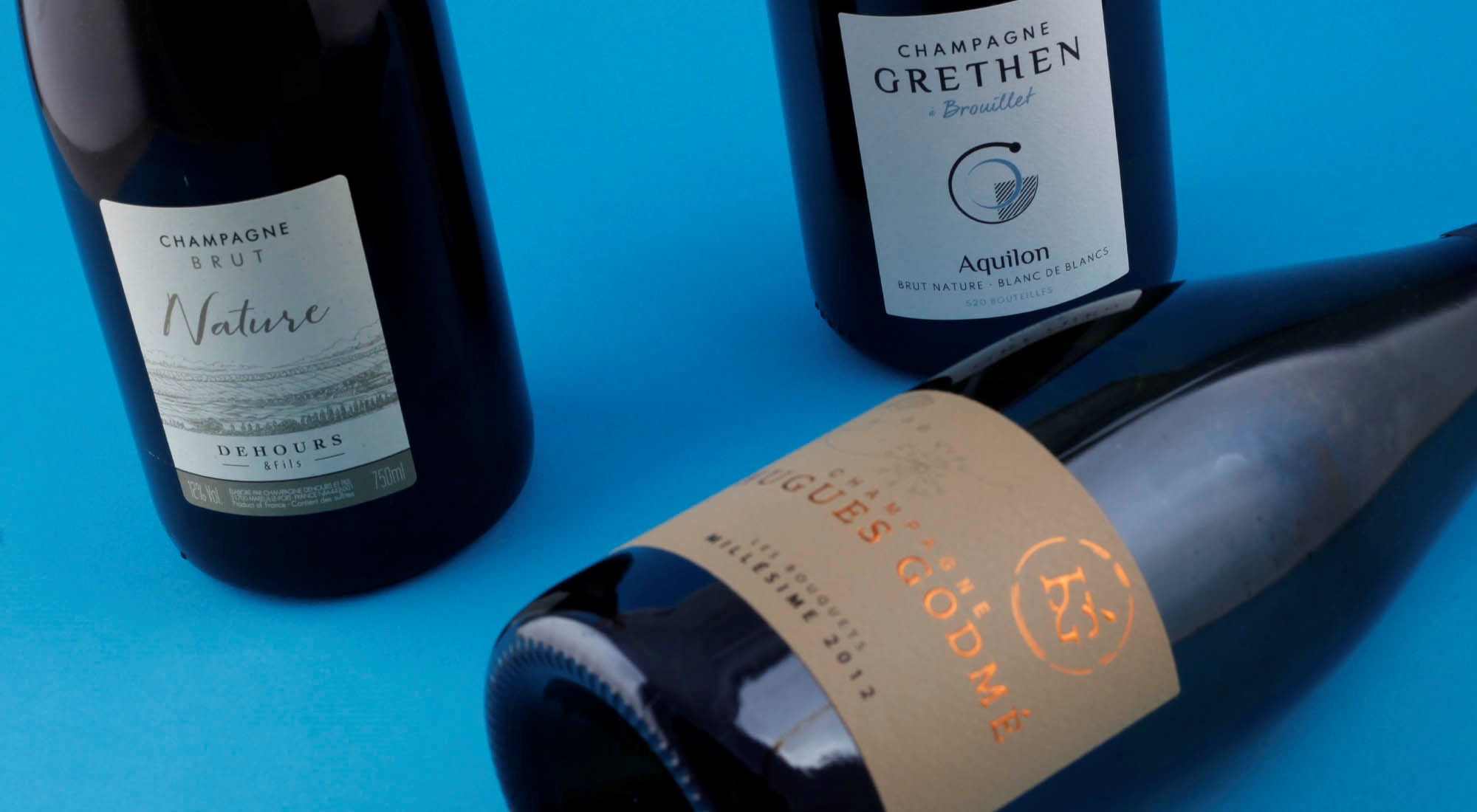Champagne is facing one of the worst seasons in decades. The first weeks of May 2024 were characterized by a succession of extreme climatic events that put winemakers to the test. After the April frosts, which had already inflicted significant damage, heavy hailstorms hit the region hard, devastating hundreds of hectares of vineyards. The situation is even more critical by the rapid spread of plant diseases, such as downy mildew, favored by the alternation of rain and sunny days. As producers try to recoup losses and protect the rest of their crops, uncertainty grows over the 2024 harvest and the future of Champagne production. As a result, questions are growing about how current conditions will affect the quality and availability of Champagne in the years to come.
 The first weeks of May dealt a very hard blow to the vineyards in Champagne. After the April frosts, which forced producers to take extraordinary measures to protect the vines, a series of violent hailstorms worsened the situation. Among the most affected villages are Trélou-sur-Marne, Passy-sur-Marne and Barzy-sur-Marne, in the Vallée de la Marne: here the vineyards were seriously damaged by both hailstorms and intense rains which destroyed leaves and buds growing, leaving in some cases only the wood of the vines.
The first weeks of May dealt a very hard blow to the vineyards in Champagne. After the April frosts, which forced producers to take extraordinary measures to protect the vines, a series of violent hailstorms worsened the situation. Among the most affected villages are Trélou-sur-Marne, Passy-sur-Marne and Barzy-sur-Marne, in the Vallée de la Marne: here the vineyards were seriously damaged by both hailstorms and intense rains which destroyed leaves and buds growing, leaving in some cases only the wood of the vines.
On May 12, a strong storm hit the area from Riceys to Vitry-Le-Croisé, passing through Neuville and Landreville, in the Côte des Bar, the southernmost Champagne production area. Hailstones with a diameter of 5 cm devastated around 500 hectares of vineyards, with damage ranging from 10% to total loss of production. A subsequent hailstorm on May 27 finally hit the areas of Loches-sur-Ource, Essoyes and Chacenay.
According to the Comité Champagne, the bad weather in May compromised the production of Champagne for an equivalent of 8 million bottles, worth 147 million euros. Approximately 1,800 hectares in total were affected by the hailstorms, and out of 1,000 of these the losses were almost total. Production could be zero in 3% of the region's vineyards.

Estimates from the Comité Champagne indicate extremely extensive damage. With an eye on the harvest, producers in Champagne will have to prepare for further climatic challenges: the combination of hailstorms and intense rain has created an environment favorable to the spread of downy mildew, raising concerns about the repercussions that could also manifest themselves in the coming seasons, starting from winter pruning operations. The recovery and management operations of the damaged vineyards will therefore be crucial to limit losses in the coming months before the harvest.
Forecasts indicate that overall production for the year 2024 will be significantly reduced, with an inevitable impact on the quantity and availability of Champagne bottles for the coming years. However, there is still hope to mitigate the damage and preserve the quality of the grapes. Producers will need to take innovative measures to meet current challenges, but determination and ingenuity suggest that, even in a difficult vintage, it is possible to produce great wines. The effort of the winemakers, who have already overcome numerous adversities throughout Champagne's history, will be fundamental to ensuring that the 2024 harvest can also give life to excellent Champagnes.
Each bottle is the result of commitment and a winemaking tradition that resists even in the most problematic years, managing to transform challenges into opportunities and managing to maintain the high quality standards that enhance the value of the denomination in the world.
Celebrating the work and dedication of the region's producers, here are some Champagnes we recommend you try.

A Blanc de Blancs 100% Chardonnay from the lieu-dit “Au dessus du village” in Brouillet, in the heart of the Vallée de l'Ardre. Vinification in fût de chêne and aging for at least 24 months on its own yeasts.
The result of the blend of 70% Meunier, 20% Chardonnay and 10% Pinot Noir, it is composed of at least 30% vin de réserve, aged with the solera method.
60% Chardonnay and 40% Pinot Noir from grapes harvested from vineyards grown in the Grand Crus of Verzy and Verzenay, in the Montagne de Reims. 2012 vintage, aging lasts at least 8 years.

It is the symbol of the Domaine produced in a limited edition for only 1550 bottles. It is a pure Chardonnay, produced from grapes from a single plot and from a single harvest, the 2015. Aging on its own yeasts for at least 5 years.
100% Pinot Noir grapes from vineyards of a single plot in Arrentières, in the Côte des Bar. Blanc de Noirs with great personality.
A Côteaux Champenois Rouge, a red wine made from 100% Meunier grapes. Vinification in steel (33%) and in fût de chêne (67%) with aging for at least 24 months before bottling.
Discover all the NEW Champagnes in the GLUGULP! collection, click HERE
